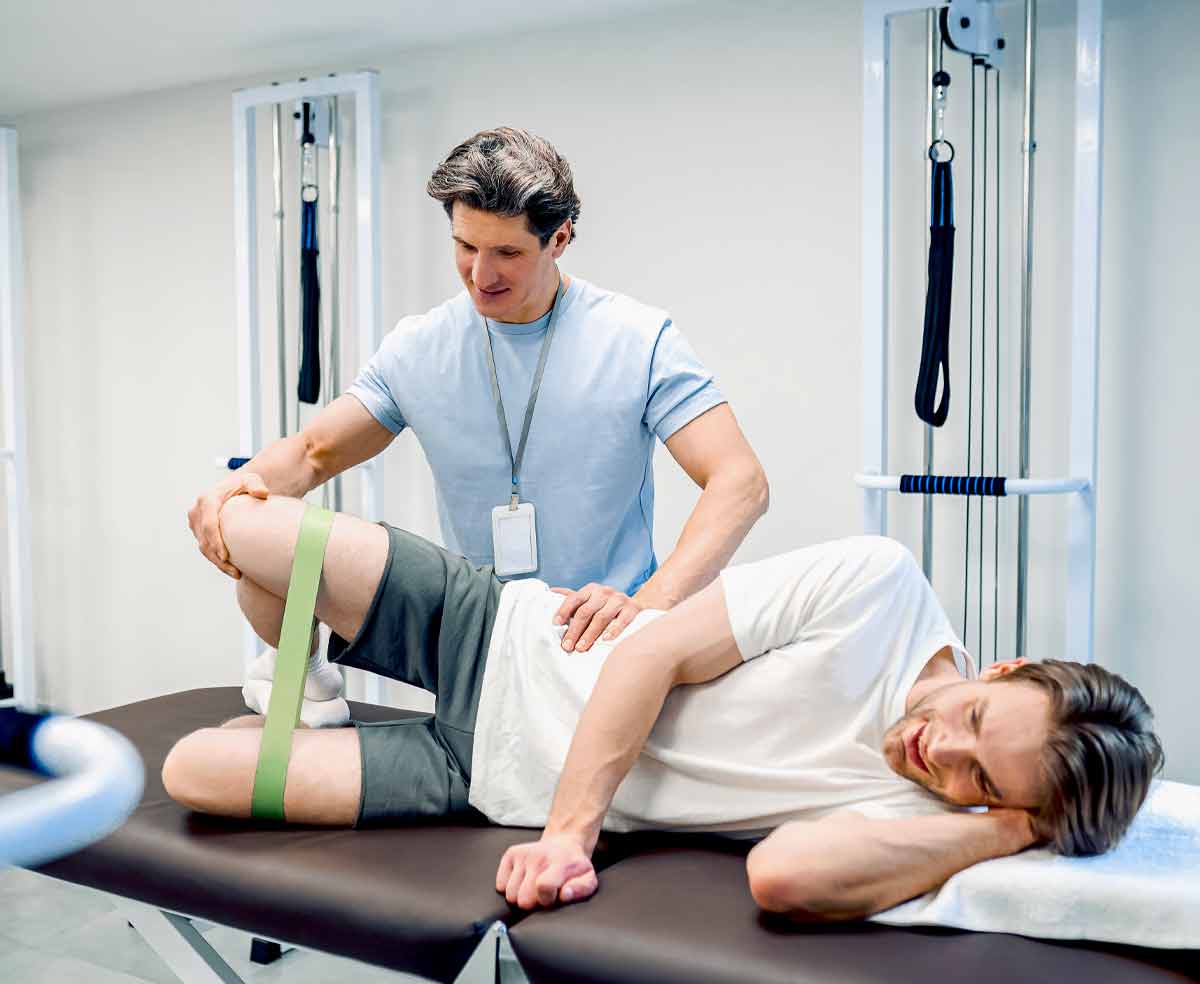What You Need to Know About Rehabilitation After Total Knee Replacement Surgery
By Dr. Frank J. Scerbo, PT, DPT ///
Total knee replacement surgery is a major procedure that can significantly improve your quality of life, especially if you’re suffering from chronic pain or limited mobility due to arthritis or injury. However, the surgery is just the first step in your recovery. Rehabilitation, particularly through physical therapy, plays a crucial role in ensuring the success of your knee replacement and helping you regain strength and mobility.
In this blog, we’ll walk you through everything you need to know about your post-surgery rehabilitation process and how physical therapy can enhance your recovery journey.
What to Expect After Total Knee Replacement Surgery
Once the knee replacement surgery is complete, your recovery begins immediately. Understanding the phases of recovery and knowing what to expect can help you mentally prepare for the journey ahead.
Immediate Post-Surgery Phase
In the hours following your surgery:
• You will likely experience some pain and swelling around the knee.
• You may be given pain medication to manage discomfort.
• Nurses will encourage you to move your feet and ankles to improve circulation.
During the first 24-48 hours, most patients will begin some form of light movement. This could include:
• Walking with assistance (using a walker or crutches).
• Practicing gentle exercises that promote blood flow and prevent clotting.
• Your hospital stay will typically last 1 to 3 days, depending on your progress and medical condition.
Importance of Physical Therapy in Knee Replacement Recovery
Physical therapy (PT) is the cornerstone of your rehabilitation after total knee replacement. Your surgeon can replace the damaged joint, but PT ensures that the surrounding muscles, ligaments, and tissues are strong enough to support the new knee, allowing for a smoother recovery. Here’s how physical therapy can help:
1. Restoring Mobility and Flexibility
After surgery, the knee joint will likely be stiff, limiting your range of motion. Physical therapy focuses on stretching exercises that help improve the knee’s flexibility, allowing you to bend, straighten, and move your knee more freely. Some common exercises include:
• Heel slides to promote knee bending
• Ankle pumps to reduce swelling and improve blood flow
• Quadriceps stretches to strengthen your thigh muscles
2. Strengthening Surrounding Muscles
Muscles around the knee, particularly the quadriceps, hamstrings, and calf muscles, need to be strengthened to support the new joint. Physical therapy incorporates resistance training and targeted exercises like:
• Leg lifts to build strength in your thighs
• Stationary biking to strengthen leg muscles without placing stress on the knee
• Step-ups and mini-squats to build stability
3. Reducing Pain and Swelling
Swelling and pain are common post-surgery, but physical therapy helps manage these issues through therapeutic techniques like:
• Cold therapy (ice packs) to reduce swelling
• Manual therapy (hands-on techniques) to reduce stiffness and improve joint motion
• Ultrasound or electrical stimulation to promote healing in tissues and reduce pain
4. Improving Balance and Gait
Learning how to walk correctly is critical after knee replacement surgery. Physical therapists guide you through exercises that:
• Improve your balance and coordination to prevent falls
• Help you practice walking mechanics to reduce strain on the knee and lower back
5. Promoting Long-Term Functionality
The ultimate goal of rehabilitation is to help you regain full functionality and independence. Physical therapists will work with you on real-life activities such as:
• Climbing stairs
• Standing up from a seated position
• Getting in and out of bed or a car
As you progress through PT, your therapist will increase the intensity and complexity of exercises, gradually returning you to your normal activities. Recovery varies for each patient, but most will typically follow a physical therapy timeline of 3 to 6 months.
Rehabilitation after total knee replacement is a challenging but rewarding journey. With the help of one of our expert physical therapists, you can restore your mobility, improve strength, and get back to your regular activities. By following your therapist’s guidance and remaining dedicated to your exercises, you’ll optimize your recovery and enjoy the long-term benefits of a pain-free, fully functional knee.
Remember, the road to recovery requires time and effort, but every small victory along the way brings you closer to living a healthier, more active life.



